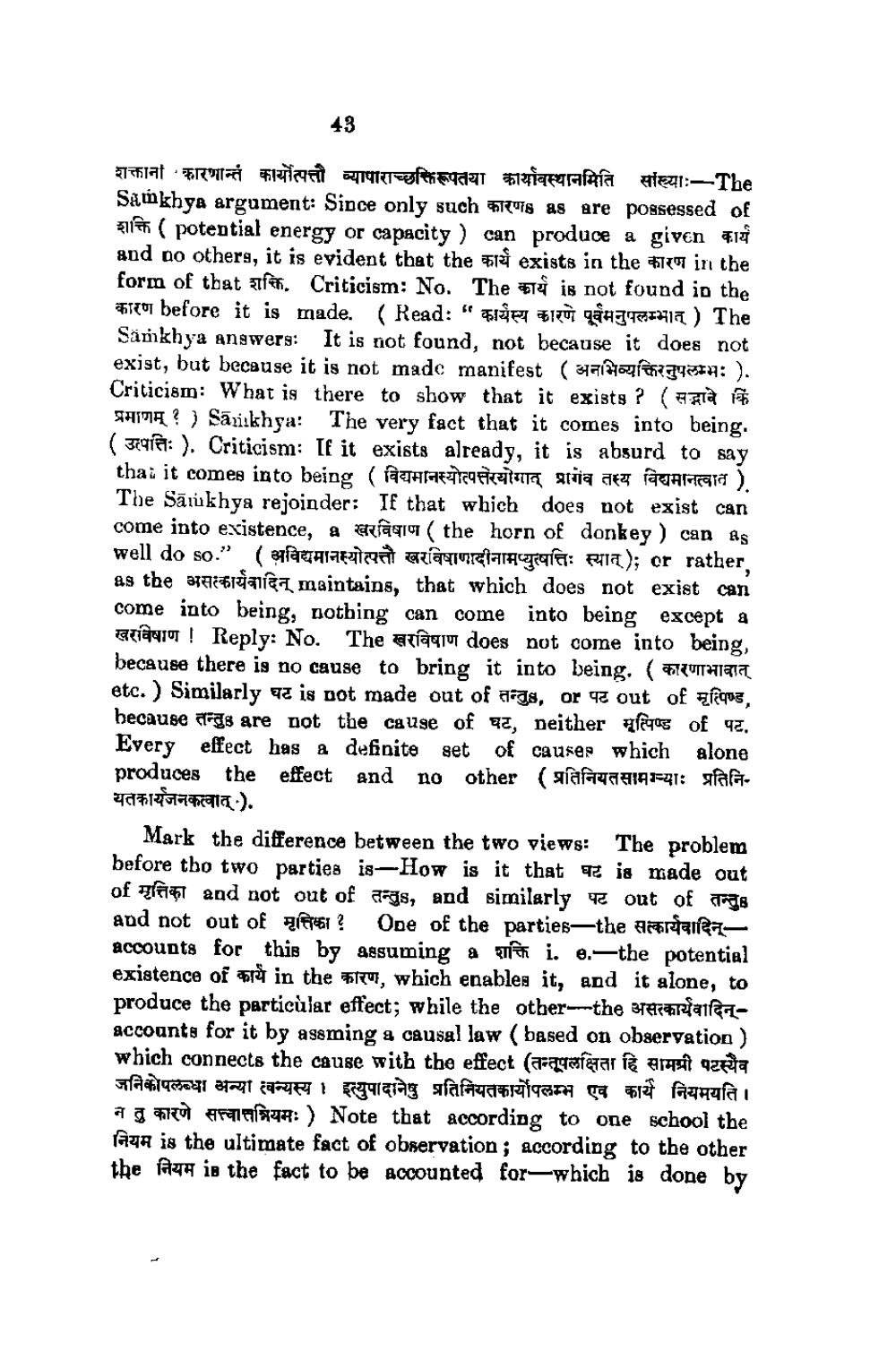________________
43
377fat RW Fiat 1911-effitant #711apyrafía elegi:-The Samkhya argument: Since only such ris as are possessed of Elfri ( potential energy or capacity ) can produce a given #19 and no others, it is evident that the exists in the 774 in the form of that strehi. Criticism: No. The wat is not found in the Fitot before it is made. (Read: "FIFT ITU SATT ) The Sankhya angwers: It is not found, not because it does not exist, but because it is not made manifest (377 74514: ). Criticism: What is there to show that it exists ? ( AF FH17 ? ) Sāvikhya: The very fact that it comes into being. ( 3891ên: ). Criticism: If it exists already, it is absurd to say thaa it comes into being (factarakitangceisia aia at iqgarraina). The Sājukhya rejoinder: If that which does not exist can come into existence, a diaq14 ( the horn of donkey) can Ag well do so." ( Aiaren aanrlardale: Riva); or rather. as the Binibigaien maintains, that which does not exist can come into being, nothing can come into being except a ataui ! Reply: No. The ataqj does not come into being, because there is no cause to bring it into being. ( FICUTA1917 etc.) Similarly az is not made out of afas, or 48 out of ziqoz because तन्तुs are not the cause of घट, neither मृत्पिण्ड of पट, Every effect has a definite set of causes which alone produces the effect and no other (प्रतिनियतसामग्न्याः प्रतिनि44714011 peata ).
Mark the difference between the two views: The problem before tbo two parties is-How is it that z ja made out of plant and not out of angs, and similarly e out of Tags and not out of मृत्तिका? One of the parties-the सत्कार्यवादिन्accounts for this by assuming a stlh i. 8.—the potential existence of or in the w, which enables it, and it alone, to produce the particular effect; while the other the sharafee accounts for it by assming a causal law (based on observation ) which connects the cause with the effect (तन्तूपलक्षिता हि सामग्री पटस्यैव जनिकोपलब्धा अन्या त्वन्यस्य । इत्युपादानेषु प्रतिनियतकार्योपलम्भ एव कार्य नियमयति । न तु कारणे सत्त्वात्तनियमः) Note that according to one school the Aga is the ultimate fact of observation; according to the other the Ach is the fact to be accounted for-which is done by




